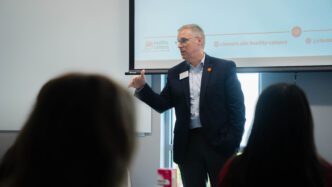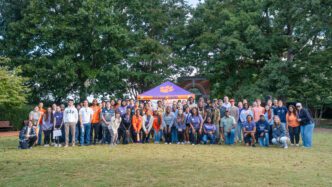The second Clemson Well-Being Council convened in June to continue the process of building our whole community well-being strategy. We focused on a review of existing data sources to describe the health risks of the population.
At Clemson, we do some robust data collection — especially for the student population. But for faculty and staff, the well-being assessment data tends to reside in several different places. While this isn’t novel or insurmountable, it does make prioritization a complex process.
So, what do we know today? Within our student population, students can struggle with anxiety, depression, loneliness, alcohol and drug use, and lack of sleep. All of these risk factors constitute potential impediments to academic performance, sense of belonging and ability to thrive. Before I arrived at Clemson, there was amazing work being done by the previous wellness committee to address concerns, and we will continue to build upon those efforts. Some of those efforts included process improvements within CAPS to reduce the wait time to be seen to less than 24 hours (HUGE WIN); ongoing implementation of the CARE Network to allow students and employees to refer students who may be at risk because of their mental health; and the inaugural CU Well-Being training, to name a few.
Within the faculty and staff community, some low signal data points to struggles with anxiety, depression, stress and relationship management. Additional concerns related to the increased cost of living in the surrounding area point to potential financial well-being risk, especially for graduate students and post-docs. Feedback from qualitative data suggests we need to continue to communicate resources more effectively, expand wellness offerings for faculty and empower our entire community with tools, training and community building.
The Office of Human Resources has made tremendous progress with providing programs and services in response to employee feedback. Within the last year, HR engaged a new vendor (ComPsych) for the Employee Assistance Program to expand benefits for faculty and staff.
Incorporating well-being into organizational culture does not just start and end with the creation of programs, though. It also includes taking on cultural shifts where every member of the organization recognizes they have a role to play. I have likely said this before, but people (whether students, faculty or staff) are not going to remember that Clemson had a Chief Well-Being Officer, but they will remember how they were treated in their departments, colleges and classrooms. People will remember the person-to-person interactions that happen thousands of times a day on our campus grounds. So, how do we advance those well-being concepts into the organization to drive that sense of belonging and thriving for all?
Current research in higher education offers some simple ideas and solutions that faculty can integrate into their classrooms. Some ideas include incorporating a welcome letter into the syllabus setting the tone for the course; providing a short check-in or gratitude practice with students before launching content; having assignments due before 10 p.m. to encourage healthy sleep patterns; incorporating short lectures on well-being topics into curriculum such as test anxiety; healthy habits such as exercise and nutrition; addressing failure and how to bounce back; or other topics students and faculty can explore in conjunction with established curriculum.
Every meeting or employee pulse check can start with a simple check-in, gratitude reflection, centering exercise and/or recognition of the people in the room, not just the work that needs to be accomplished. It sounds simple, but it takes each of us committed to the idea we want to be connected, we want our community to thrive, and we want people to feel a sense of belonging. The words and actions we choose as a part of our everyday life on campus lay the foundation of a well culture, but it starts with intentionality.
Our data says the work is not done at Clemson. Each of us has a role in addressing concerns. I often challenge individuals to think about one thing. If we were to make Clemson or ourselves one percent better today, what would it be? It’s not just about more programs, it’s about how we as individuals choose to show up each day and make a difference. What’s your one percent?
Anna







